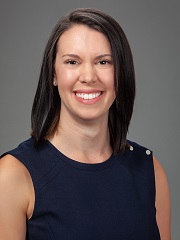UC Davis Health: Providing customized EHR training to help physicians
- UC Davis Health’s Physician Efficiency Program works to reduce physicians’ frustration with electronic health record (EHR) technology.
- Rather than relying on clinical specialists, the program hires technical trainers who enjoy helping physicians use technology more easily.
- Each physician receives up to four hours of one-on-one training, and each clinic holds small-group training sessions to address clinic-specific EHR issues.
After spending the last decade implementing electronic health record (EHR) technology, we at UC Davis Health are faced with the unintended consequences that came with it.

Our story is not unique: We implemented EHRs with the intent to improve the quality of care we deliver, enable data sharing and provide integrated technology to streamline clinical care and the revenue cycle. We achieved our goals but unknowingly met these milestones by developing technology that made it hard for physicians to do their work.
Even worse, the technology caused physicians to feel like box checkers rather than care providers. To quote several of our physicians, the technology “took the joy out of medicine.”
Education and training on the operation of the EHR are considered crucial to improving physician satisfaction and reducing documentation time, but we found little consensus on best practices for providing such training. Where do you start?
At UC Davis Health, our Physician Efficiency Program (PEP) works to help physicians navigate EHR technology in a way that best suits their workflow. The goals are to increase physician and patient satisfaction and to reduce the amount of time that physicians spend interacting with the EHR.
We have helped more than 500 faculty physicians and residents in 50 specialties since PEP began in February 2018. In 2020 PEP will expand to engage all primary and specialty care ambulatory physicians on a more frequent basis and will start working in inpatient care units as well.
We have found three key approaches to implementing the program.
1. Find out what your physicians need
Just as no single fitness regimen works for everyone, no single training plan will accommodate all your physicians.
About 12 weeks before PEP starts its work with a specific clinic, the PEP team starts compiling data from the EHR to learn how each physician and the clinic as a whole utilize the system. A pre-visit survey is sent to all physicians to learn about their concerns, and the PEP team conducts a half-day shadowing session to better understand the clinic’s workflow.
When we first started our program, we assumed that our physicians, who had been using the EHR for over a decade, would need only advanced tips and tricks. As it turns out, many of them had not adopted the basics.
We quickly pivoted to provide more foundational content and created a setting where physicians could admit what they didn’t know without judgment. This approach helped physicians feel more comfortable in the educational environment, leading them to volunteer for additional training.
Each physician receives up to four hours of individualized, one-on-one training. This training occurs during clinic hours, but patient appointments are reduced by half to allow time for practice charting. Each physician leaves this training with an individualized efficiency plan.
One-hour group discussions are conducted weekly to address each clinic’s unique struggles, with each on-site PEP engagement typically lasting three to six weeks. During this time the PEP team works to optimize the EHR platform for each clinic, building new digital tools as needed.
2. Just get started already
Right before we started our pilot program, I shared a panic moment with our executive director: “What if it doesn’t work? What if we don’t know enough to help them?” She had the right answer: “No matter what you give them, it’s more help than they’re getting today.”
We started our pilot program with three staff trainers who were not ambulatory-certified by our EHR vendor, had not trained in the ambulatory environment in several years and were volunteering their time to assist with this effort. We had no documented current-state workflows. We simply believed that customized, at-the-elbow training could improve the physician experience.
Our presence in the clinics reflected our commitment to supporting our physicians. In response, those physicians became more engaged in working to improve the EHR and championed our program’s efforts to receive additional funding. A year and a half later, we have 12 full-time staff dedicated to education and optimization of the EHR.
EHR vendors promote the idea that clinical specialists should train physicians in their own specialty, and some organizations conduct multiday off-site training sessions. We are finding success with an entirely different approach. We hire technical training staff who enjoy educating others and are motivated to improve the EHR experience of our physicians. These staff know the EHR and learn about clinical workflows through on-the-job training, but they are not clinically trained; they are trained in how to help physicians.
3. If it doesn’t work, stop doing it.
You may think that you are providing sufficient EHR support, but if physicians are complaining, something is not working.
How often do your physicians utilize your organization’s digital knowledge center or review tip sheets? If your physicians are like ours, almost never. If physicians aren’t responding well to the modality of training you are providing, consider making changes or dropping it all together.
After working with a clinic, the PEP team obtains feedback from physicians, operational leadership and our own team members to evaluate the efficacy of the program. We developed a team culture where it’s OK to try a new concept and have it fall flat. The creativity of your staff and diversity of ideas will inspire continual refinement of your training delivery.





